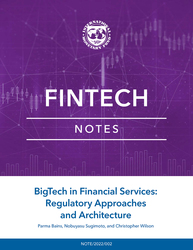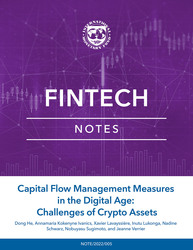
Tokenization and Financial Market Inefficiencies
This note introduces a taxonomy and a conceptual framework centered on market inefficiencies to evaluate the potential impact of tokenization.
READ MORE...
Volume/Issue:
Volume 2025
Issue 001
Publication date: January 2025
ISBN: 9798400298905
$5.00
Add to Cart by clicking price of the language and format you'd like to purchase
Available Languages and Formats
| English |
Prices in red indicate formats that are not yet available but are forthcoming.
Topics covered in this book
This title contains information about the following subjects.
Click on a subject if you would like to see other titles with the same subjects.
Finance , Money and Monetary Policy , Tokenization , central banks , asset lifecycle , financial markets , financial asset market friction , B , market infrastructure investment externality , financial market inefficiency , IMF Library , Note 2025/001 , D , knowledge externality , Bonds , Smart contracts , Securities markets , Liquidity , Blockchain and DLT , Global
Summary
Most financial assets are digital today. Tomorrow, they may be tokenized. Tokenization implies recording and transferring assets on a widely shared and trusted digital ledger that can be programmed. Interest in tokenization is strong and experiments abound, but what are the consequences of this new trend for financial markets? This note introduces a taxonomy and a conceptual framework centered on market inefficiencies to evaluate this question. Some inefficiencies could decline across the asset life cycle. Others would remain, however, and new ones could emerge. Issuing, servicing, and redeeming assets might involve fewer intermediaries and thus become cheaper. The costs of trading assets may also decrease as tokenization lowers some counterparty risks and search frictions and offers flexibility in settlement. Additionally, greater competition among brokers could lower transaction fees. However, tokenization may amplify shocks if it induces institutions to become more interconnected and hold lower liquidity buffers or higher leverage, potentially jeopardizing financial stability. Programs themselves may introduce new risks related to strings of contingent contracts or faulty code. While competition may grow among financial intermediaries, the provision of market infrastructure could become more concentrated due to network effects.
Copyright © 2010 - 2025
Powered by:
AIDC



